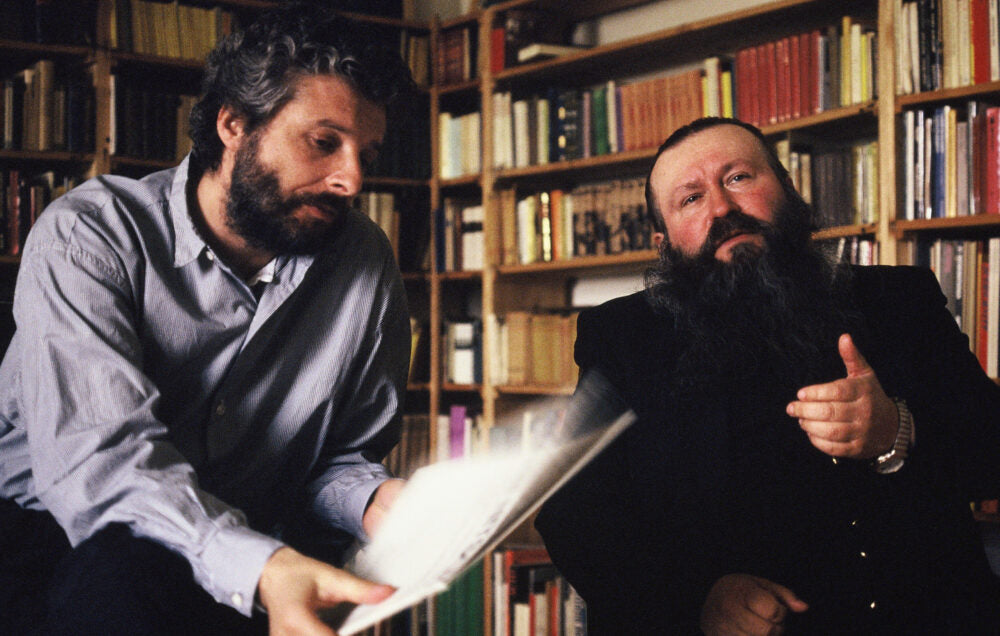Nitsch collaborated with longtime friend and fellow Viennese Actionist Günter Brus to create an organ composition for Brus’s pavilion.

Hermann Nitsch.

André Heller, Hermann Nitsch.
Hermann Nitsch was a founder of Wiener Aktionismus (“Viennese Actionism”), he created deliberately shocking “actions” as a reaction against the legacy of Nazi fascism in Austria to highlight the violence of humanity. Viennese Actionists—a group that also included artists Günter Brus, Otto Muehl, and Rudolf Schwarzkogler—are known for ritualistic, quasi-religious ceremonies in which nude protagonists brutalized their bodies, using self-harm, feces, bodily fluids, and the blood and entrails of animals.
...Nitsch collaborated with longtime friend and fellow Viennese Actionist Günter Brus to create the music for Brus’s pavilion—
At the core of Nitsch’s work were Orgien Mysterien Theater (“Orgies Mysteries Theater”), disturbing ceremonies combining Christian iconography, blood, animal carcasses, and other ritualistic elements. Nitsch staged over 100 of these performances, including the 6-Day-Play (1998), which contained three orchestras, a chamber music group, a butcher, and numerous doctors in addition to thousands of liters of wine, hundreds of liters of blood, and several animal carcasses. Every part of these actions was meticulously scripted to create a Gesamtkunstwerk—or “total work of art”—combining painting, music, and action. Music and sound played an essential role, with Nitsch composing soundtracks ranging from Gregorian chants to noise orchestras and scream choirs. Nitsch also frequently performed stand-alone organ concerts, describing his music as originating from a human scream.

Fairground View: Günter Brus’s pavilion, organ music provided by Hermann Nitsch. Luna Luna, Hamburg, Germany, 1987.
For Luna Luna, Hermann Nitsch collaborated with longtime friend and fellow Viennese Actionist Günter Brus to create the music for Brus’s pavilion—a magical castle formed from crayons, the interior filled with paintings depicting the birth and death of its imaginary half-human, half-crayon figures. Nitsch’s organ composition formed a primal, violent soundtrack as audience members made their way through the different rooms of Brus’s fantastical world.
Forgotten Fantasy
Now open at the shed, nyc
Thirty-seven years ago, Luna Luna landed in Hamburg, Germany: the world’s first art amusement park with rides, games, and attractions by visionaries like Basquiat, Haring, Lichtenstein and Hockney. By a twist of fate, the park’s treasures were soon sealed in 44 shipping containers and forgotten in Texas — until now.









